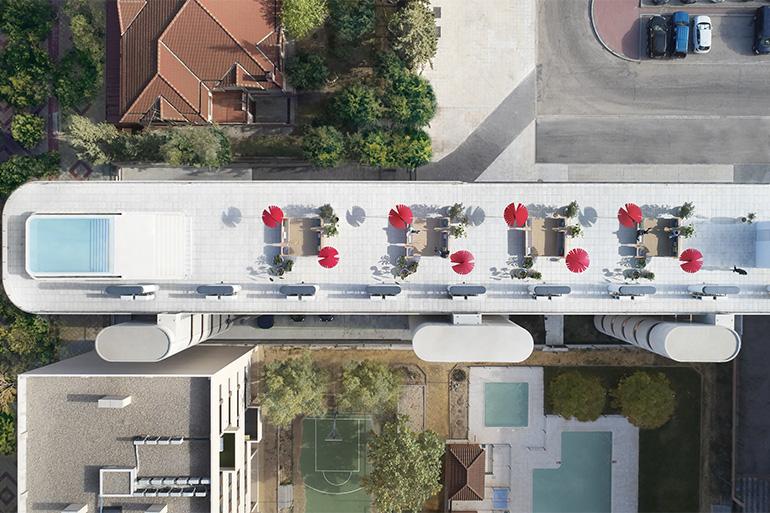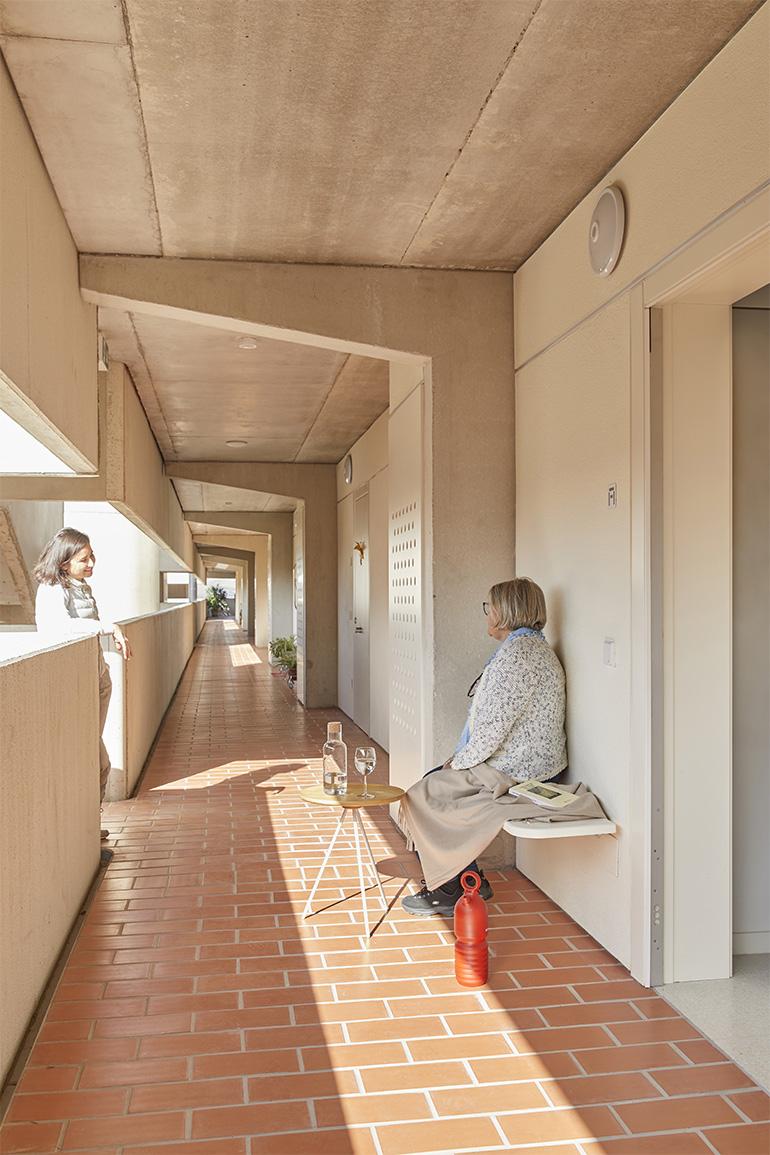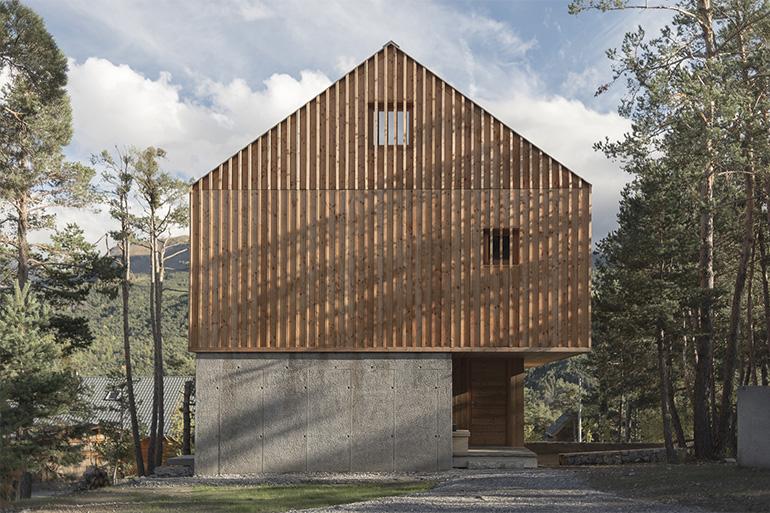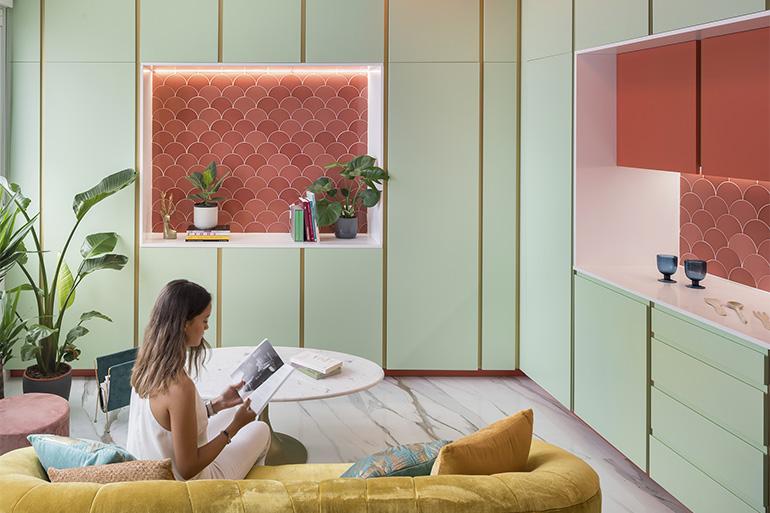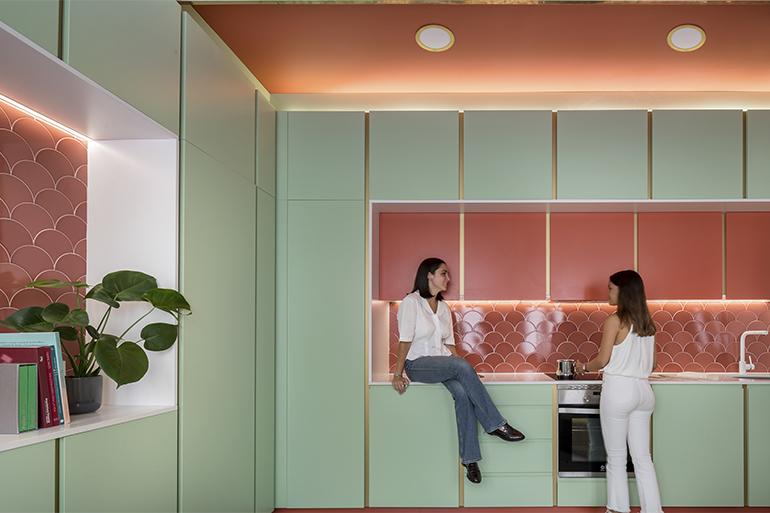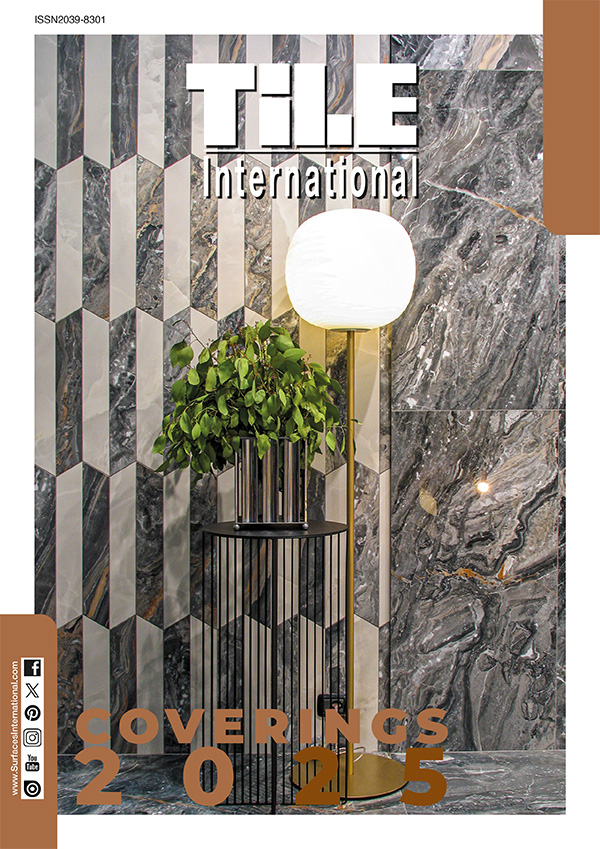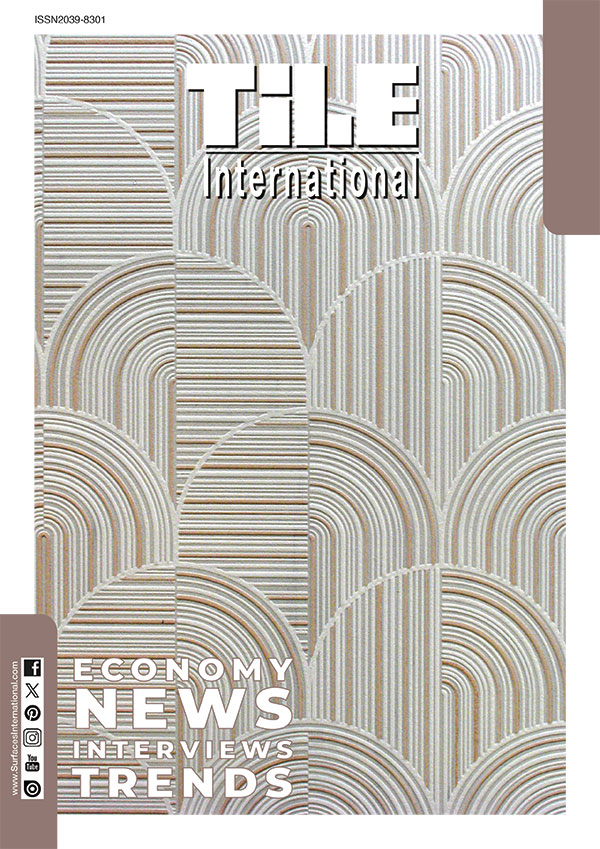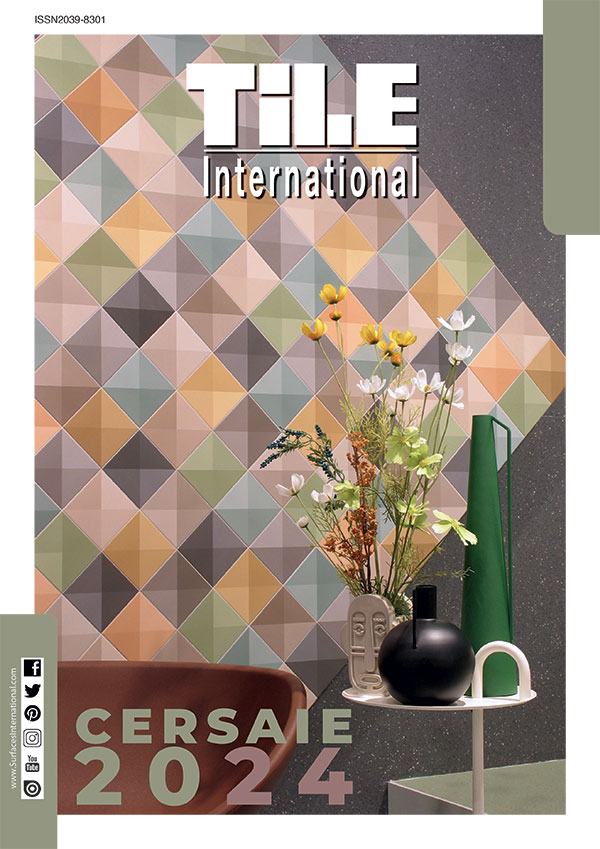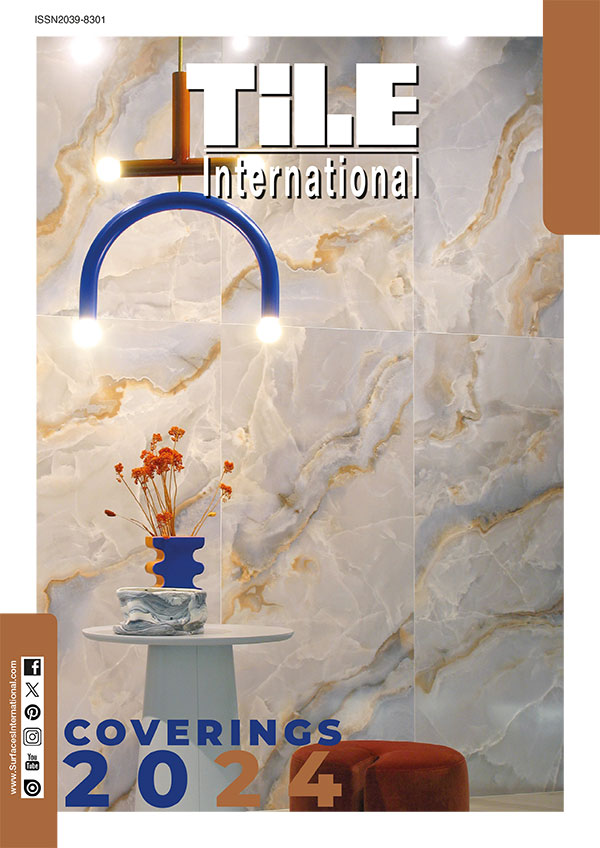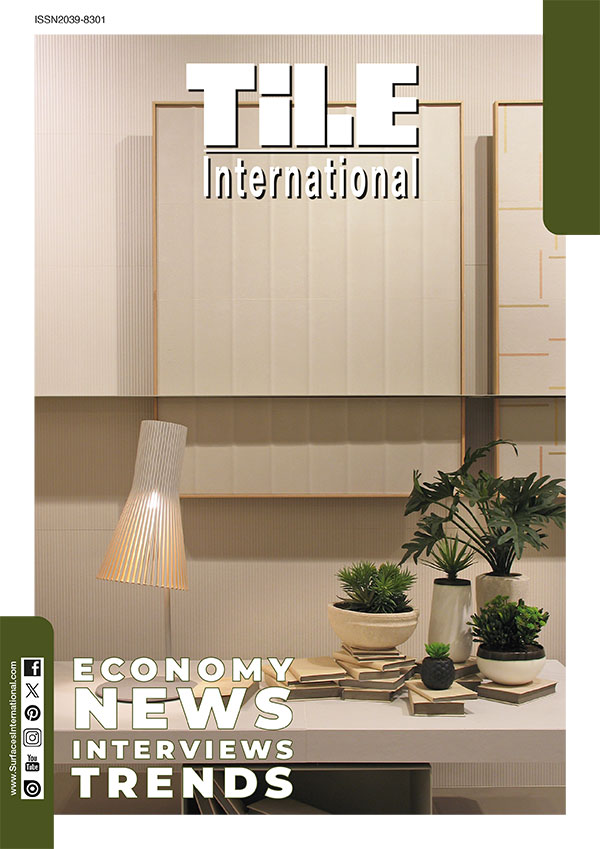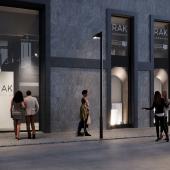A senior citizen co-living space designed by Romero&Vallejo
Vitápolis, located in Toledo, introduces a fresh approach to senior living, catering to their functional, social and emotional needs.
The winner of the first APE Grupo Architecture Awards has been revealed, an initiative launched by the tile company to highlight ceramics’ role in architecture and interior design. The project “Vitápolis”, situated in Toledo, Spain, and developed by the Romero&Vallejo studio, clinched the top prize after deliberation by the prestigious jury, featuring the renowned Italian architect Benedetta Tagliabue (EMBT Architects), Tomás Alía (Caramba Estudio), recipient of the Gold Medal for Fine Arts, and Santa Morro, representing the Architects’ Association of Castellón.
“Vitápolis” emerges as a novel housing concept: a co-living space designed for seniors. The jury commended the project, noting that it “embodies a well-resolved social, joyful and functional architecture despite the building’s proportions.” They emphasised the “consistent and natural use of ceramics” from APE Grupo, “employing a traditional material language, imparting a cheerful and contemporary atmosphere to the entire space”.
The jury expressed admiration for “the project’s social character, successfully addressing the new functional and emotional needs of the senior community, creating a fresh perspective on spaces filled with vitality and brightness”.
In general, the jury unanimously expressed their appreciation for the quality and variety of entries submitted to the Ape Grupo Architecture Awards, showcasing the richness and possibilities of ceramic materials in architecture and interior design. They also conveyed satisfaction with the international nature of the proposals, which have originated from different continents.For this reason, the jury highlighted the quality of three additional projects, granting each of them an honourable mention. One mention was given to the project “Maison les Marquises” in France by the Atelier d’Architecture AMASA.
The jury commended “the beauty and architectural rigour of the project as a whole, skilfully combining two materials, wood and ceramics, in a cohesive and integrated manner”. They observed that “a single collection of ceramics is strategically used in various spaces of the wooden house, lending a distinct character to the project”.Another mention has been conferred upon the residence “Cliff House Villas” in the Philippines by the studio Zubu Design Associates. The jury appreciated that “an elegant ‘Misiano’-style residence is achieved with a visible metal and glass structure, where ceramics are cleanly integrated and form an essential part of the project, both in its interior and exterior use”.
The third mention went to the project “Loft en una Mercería” in Madrid, Spain, by the studio OOIIO Arquitectura. The jury praised “the strategy of addressing the change of use of spaces in large cities, in this case, transitioning from a haberdashery to an apartment”. They valued the new project as “well-resolved, with a highly identified and well-coordinated colour scheme, boldly using glazed red ceramic in the form of scales”.
The projects that made it to the finals are “Jung Offices” (Spain) by the Wanna studio, the residence “Blossom” (Belarus) by the Savicki Design studio and the project “Planos y Fondos” (Spain) by the Argo Arquitectura studio.
The APE Grupo Architecture Awards welcome professionals and projects from both Spain and around the world, offering a monetary prize of 5,000 euros.

